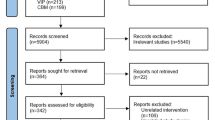Abstract
Purpose. To investigate the regional absorption characteristics of the distal gut using two markers of permeability, quinine (a transcellular probe) and 51CrEDTA (a paracellular probe).
Methods. The permeability markers were delivered to the undisturbed gastrointestinal tract in 39 healthy volunteers using an oral timed-release delivery vehicle which allowed pulsed release within a particular site of the gut. Site of release was identified using gamma scintigraphy. Absorption of quinine and 5lCrEDTA was assessed by measuring the percent excretion in the urine using HPLC and gamma counting respectively. Serial plasma samples allowed time-concentration curves for quinine to be plotted.
Results. There was a significant trend for diminished absorption with more distal delivery of the transcellular probe, quinine, which was: 6.26 ± 0.87% (small intestine, n = 10); 4.65 ± 0.93% (ascending colon, n = 16); and 2.59 ± 0.52% (transverse colon, n = 10) of the ingested dose excreted respectively (p < 0.001). No such gradient was seen with the paracellular marker, 5lCrEDTA.
Conclusions. These results suggest that delayed release formuations should aim for release in the distal small bowel and proximal colon if absorption is to be miximised. Absorption by the transcellular route diminishes in the more distal colon, a fact which has implications for delayed or sustained release formulations.
Similar content being viewed by others
REFERENCES
K. H. Antonin, P. Bieck, M. Scheurlen, M. Jedrychowski, and H. Malchow. Oxprenolol absorption in man after single bolus dosing into two segments of the colon compared with that after oral dosing. Br. J. Clin. Pharm. 19:137S–42S (1985).
C. H. Gleiter, K. H. Antonin, P. Bieck, J. Godbillon, W. Schonleber, and H. Malchow. Colonoscopy in the investigation of drug absorption in healthy volunteers. Gastrointest. Endoscopy 31:71–3 (1985).
C. G. Wilson, M. Bakhshaee, H. E. Stevens, A. C. Perkins, M. Frier, P. E. Blackshaw, and J. S. Binns. Evaluation of a gastro-resistant pulsed release delivery system (Pulsincap) in humans. Drug Del. 4:201–6 (1997).
A. R. Zoest, S. Wanwimolruk, and C. T. Hung. Simple high-performance liquid chromatographic method for the analysis of quinine in human plasma without extraction. J. Liquid Chromatogr. 13:3481–91 (1990).
J. G. Hardy, C. G. Wilson, and E. Wood. Drug delivery to the proximal colon. J. Pharm. Pharmacol. 37:874–77 (1985).
M. Proano, M. Camilleri, S. F. Phillips, M. L. Brown, and G. M. Thomforde. Transit of solids through the human colon: regional quantification in the unprepared bowel. Am. J. Physiol. 258:G856–62 (1990).
I. Torsoli, M. L. Famorino, and V. Crucioli. The relationships between anatomy and motor activity of the colon. Am. J. Dig. Dis. 13:462–67 (1968).
P. S. Kamath, S. F. Phillips, M. K. O'Connor, M. L. Brown, and A. R. Zinsmeister. Colonic capacitance and transit in man: modulation by luminal contents and drugs. Gut 31:443–49 (1990).
L. Barrow, K. P. Steed, R. C. Spiller, P. J. Watts, C. D. Melia, M. C. Davies, and C. G. Wilson. Scintigraphic demonstration of accelerated proximal colonic transit by lactulose and its modification by gelling agents. Gastroenterology 103:1167–73 (1992).
J. Frexinos, L. Bueno, and J. Fioramonti. Diurnal changes in myoelectric spiking activity of the human colon. Gastroenterology 88:1104–10 (1985).
F. Narducci, G. Bassotti, M. Gaburri, and A. Morrelli. Twenty four hour manometric recording of colonic motor activity in healthy man. Gut 28:17–25 (1987).
E. E. Soffer, P. Scalabrini, and D. Wingate. Prolonged ambulant monitoring of human colonic motility. Am. J. Physiol. 257:G601–6 (1989).
G. Bassotti, C. Betti, B. P. Imbimbo, M. A. Pelli, and A. Morelli. Colonic motor response to eating: a manometric investigation in the proximal and distal portions of the viscus in man. Am. J. Gastroenterol. 84:118–22 (1989).
G. Bassotti, C. Betti, C. Fusaro, and A. Morelli. Colonic high-amplitude propagated contractions (mass movements): repeated 24-h manometric studies in healthy volunteers. J. Gastrointest. Mot. 4:187–91 (1992).
R. H. Ghoo, J. G. Moore, E. Greenberg, and N. P. Alazraki. Circadian variation in gastric emptying of meals in humans. Gastroenterol 93:515–18 (1987).
D. Kumar, D. Wingate, and Y. Ruckebusch. Circadian variation in the propagation velocity of the migrating motor complex. Gastroenterology 91:926–30 (1986).
S. Travis and I. Menzies. Intestinal permeability: functional assessment and significance. Clin. Sci. 82:471–88 (1992).
D. G. Maxton, I. Bjarnason, A. P. Reynolds, S. D. Catt, T. J. Peter, and I. S. Menzies. Lactulose, 51Cr-labelled ethylenediaminetetra-acetate, L-rhamnose and polyethyleneglycol 500 as probe markers for assessment in vivo of human intestinal permeability. Clin. Sci. 71:71–80 (1986).
I. Bjarnason, D. Maxton, A. P. Reynolds, S. Catt, T. J. Peters, and I. S. Menzies. Comparison of four markers of intestinal permeability in control subjects and patients with coeliac disease. Scand. J. Gastroenterol. 29:630–39 (1994).
L. A. Salako and A. Sowunmi. Disposition of quinine in plasma, red blood cells and saliva after oral and intravenous administeration to healthy adult Africans. Eur. J. Clin. Pharmacol. 42:171–74 (1992).
G. Paintaud, G. Alvan, and O. Ericsson. The reproducibility of quinine bioavailability. Br. J. Clin. Pharm. 35:305–7 (1993).
R. D. Pullan, G. A. O. Thomas, M. Rhodes, R. G. Newcombe, G. T. Williams, A. Allen, and J. Rhodes. Thickness of adherent mucus gel on colonic mucosa in humans and its relevance to colitis. Gut 35:353–59 (1994).
J. M. Hebden, A. C. Perkins, P. J. Gilchrist, P. E. Blackshaw, C. G. Wilson, and R. C. Spiller. A dual radionuclide study for the investigation of colonic drug delivery and absorption. Nucl. Med. Commun. 16:232 (1995).
I. Bjarnason, T. J. Peter, and N. Veall. A persistent defect in intestinal permeability in coeliac disease demonstrated by a 51Cr-labelled EDTA absorption test. Lancet i:323–25 (1983).
Author information
Authors and Affiliations
Rights and permissions
About this article
Cite this article
Hebden, J.M., Wilson, C.G., Spiller, R.C. et al. Regional Differences in Quinine Absorption from the Undisturbed Human Colon Assessed Using a Timed Release Delivery System. Pharm Res 16, 1087–1092 (1999). https://doi.org/10.1023/A:1018948102778
Issue Date:
DOI: https://doi.org/10.1023/A:1018948102778




